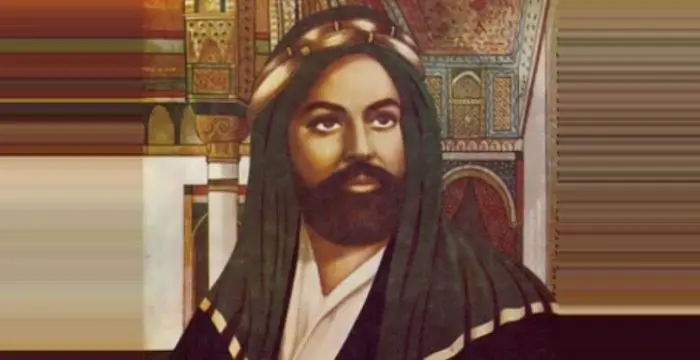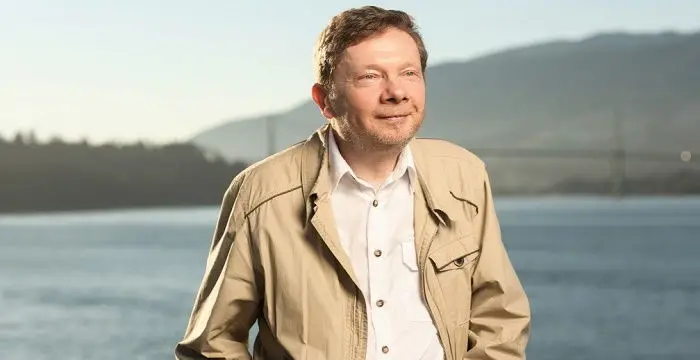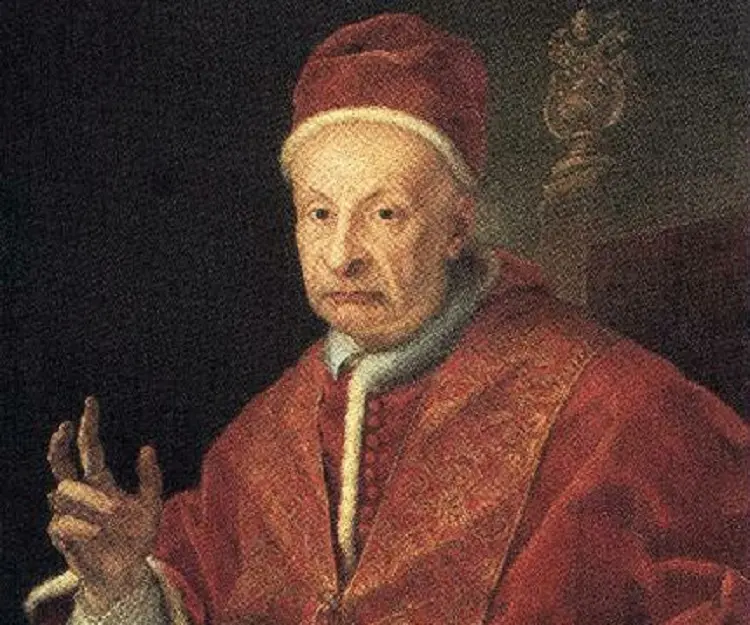
Pope Benedict XIII - Spiritual, Family and Personal Life
Pope Benedict XIII's Personal Details
Pope Benedict XIII was the pope from 29 May 1724 to his death in 1730
| Information | Detail |
|---|---|
| Birthday | February 2, 1649 |
| Died on | February 21, 1730 |
| Nationality | Italian |
| Famous | Leaders, Spiritual & Religious Leaders, Religious Leaders, Servant of God, Spiritual |
| Birth Place | Gravina in Puglia |
| Religion | Catholicism |
| Gender | Male |
| Sun Sign | Aquarius |
| Born in | Gravina in Puglia |
| Famous as | Servant of God |
| Died at Age | 81 |
// Famous Religious Leaders
Prophet Muhammad
Prophet Muhammad was the founder of Islam, one of the most widespread religions in the world. This biography profiles his childhood, life story, achievements and more.
Murad IV
Murad IV was one of the mighty Sultans in the history of the Ottoman Empire. This biography profiles his childhood, family, accession, rule, administration and timeline.
Eckhart Tolle
Eckhart Tolle is a well-known spiritual leader, and author. Check out this biography to know about his childhood, family, personal life, spiritual awakening, etc.
Pope Benedict XIII's photo
Who is Pope Benedict XIII?
Pope Benedict XIII was the pope from 29 May 1724 to his death in 1730. The cause for his canonization was first opened in 1755 but closed soon after. It was re-opened and closed twice again. Eventually he was given the posthumous title of Servant of God. Born into the archducal family of Orsini-Gravina, he developed a liking for the Order of St. Dominic at a young age. On a visit to Venice when he was 16, he decided to enter the Dominican novitiate going against the wishes of his parents. His parents tried their best to dissuade him from taking the decision, but the determined young man had made up his mind. A simple and humble person religiously devoted to the church, he was soon elevated to the cardinalate. Following the death of Pope Innocent XIII in 1724, he was elected to be his successor. As someone who believed in living an austere lifestyle, he was much against the extravagance of the cardinals and ecclesiastics and attempted to bring about reformation by enforcing a life of rigid discipline upon them. Being a lover of peace he found himself in constant struggle with John V of Portugal and the Jansenists regarding foreign politics. As the pope he also inaugurated the famous Spanish Steps and founded the University of Camerino.
Childhood & Early Life
Pope Benedict XIII was born on 2 February 1649 in Gravina in Puglia, Kingdom of Naples, as Pietro Francesco Orsini, to Ferdinando III Orsini, duke of Gravina, and Giovanna Frangipani della Tolfa.
He became interested in the Order of St. Dominic at a young age. His parents were, however, not in favor of him entering the order as he was their eldest son and heir to the title and estates of his childless uncle the Duke of Bracciano.
At the age of 16, he visited Venice and entered the Dominican novitiate. His parents were aghast and tried their best to make him change his mind. They even approached Pope Clement IX but their efforts were in vain. The pope instead supported the young man and even shortened his novitiate by half.
As a student and novice he proved to be extremely sincere and devoted. Humble and enthusiastic, he worked very hard to acquire ecclesiastical learning. He was promoted to a professorship when he was 21.
Later Years
Pietro Francesco Orsini was elevated to the rank of the Cardinal-Priest of San Sisto on 22 February 1672 by Pope Clement X who was his relative. This elevation came against his will and Orsini protested against this honor. However, he was forced to accept it under the vow of obedience by the General of the Dominicans, at the insistence of the pope.
As the cardinal he continued his simple lifestyle and strictly followed the rule of his order, and never laid aside his habit. In 1675, he was given the option of becoming the Archbishop of Salerno or that of Manfredonia (Siponto). He chose the latter as he felt it required greater exercise of pastoral zeal being a poor diocese. Orsini then went on to serve as the Archbishop of Cesena (1680), and of Benevento (1686).
His austere lifestyle and sincere dedication towards the church not only won his family’s approval for his decision of becoming a monk, but also helped to guide his relatives towards the religious path. His mother, who had initially disapproved of his choice to join the Dominican Order, embraced the religious life in the Third Order of St. Dominic. His sister and two of his nieces also followed suit.
In 1724, Pope Innocent XIII died and a conclave was called up to choose his successor. There were no clear candidates though Orsini was considered one of the papabile. He was regarded a good choice to succeed the pope because of his simple lifestyle and high values.
Ever the modest person, Orsini initially refused to participate in the election as he considered himself unworthy. After considerable persuasion by the cardinals, he finally agreed and was elected pontiff on 29 May 1724. On becoming the pope, he chose the regnal name of "Benedict XIII" in honor of Pope Blessed Benedict XI because he was also of the Dominican Order.
As someone who had no interests in worldly possessions, he enforced codes of rigid discipline for the cardinals and ecclesiastics as he disapproved of their extravagance. During the Jubilee of 1725, he personally discharged the duties of Grand Penitentiary.
He soon became known for adding considerable personal touches to official ceremonies. This not only created embarrassment for his aides but also led to inconveniences to the public. Once he prostrated himself at the door of Saint Peter's to kiss the floor and another such instance was when he refused to be carried in the Sedia Gestatoria but insisted on walking through the basilica.
Pope Benedict XIII beatified Bernardine of Feltre in 1728 and Peter Fourier in 1730. The others he beatified include Hyacintha of Mariscotti, Fidelis of Sigmaringen, Vincent de Paul, and John del Prado. He also canonized Pope Gregory VII in 1728 and conferred sainthood upon Agnes of Montepulciano, Aloysius Gonzaga, and Boris of Kiev. In addition, he inaugurated the famous Spanish Steps and founded the University of Camerino.
Major Works
Pope Benedict XIII was well known for his commitment to the church and service to humanity. He built and renovated many churches, built hospitals and worked hard to alleviate the sufferings of the poor and the downtrodden. In recognition of his benevolence and selfless service to charitable causes, he was given the title of "Second Founder" of Benevento, a city where he had served for almost four decades.
Personal Life & Legacy
He lived to the age of 81 and died on 21 February 1730 after a sudden bout of Catarrh.
The process for his beatification was opened in 1755 under Pope Benedict XIV but was closed down soon after. It was re-opened and closed twice more. Finally he was given the posthumous title of Servant of God.
// Famous Spiritual
Prophet Muhammad
Prophet Muhammad was the founder of Islam, one of the most widespread religions in the world. This biography profiles his childhood, life story, achievements and more.
Murad IV
Murad IV was one of the mighty Sultans in the history of the Ottoman Empire. This biography profiles his childhood, family, accession, rule, administration and timeline.
Eckhart Tolle
Eckhart Tolle is a well-known spiritual leader, and author. Check out this biography to know about his childhood, family, personal life, spiritual awakening, etc.
Pope Benedict XIII biography timelines
- // 2nd Feb 1649Pope Benedict XIII was born on 2 February 1649 in Gravina in Puglia, Kingdom of Naples, as Pietro Francesco Orsini, to Ferdinando III Orsini, duke of Gravina, and Giovanna Frangipani della Tolfa.
- // 22nd Feb 1672Pietro Francesco Orsini was elevated to the rank of the Cardinal-Priest of San Sisto on 22 February 1672 by Pope Clement X who was his relative. This elevation came against his will and Orsini protested against this honor. However, he was forced to accept it under the vow of obedience by the General of the Dominicans, at the insistence of the pope.
- // 1675As the cardinal he continued his simple lifestyle and strictly followed the rule of his order, and never laid aside his habit. In 1675, he was given the option of becoming the Archbishop of Salerno or that of Manfredonia (Siponto). He chose the latter as he felt it required greater exercise of pastoral zeal being a poor diocese. Orsini then went on to serve as the Archbishop of Cesena (1680), and of Benevento (1686).
- // 1724In 1724, Pope Innocent XIII died and a conclave was called up to choose his successor. There were no clear candidates though Orsini was considered one of the papabile. He was regarded a good choice to succeed the pope because of his simple lifestyle and high values.
- // 29th May 1724Ever the modest person, Orsini initially refused to participate in the election as he considered himself unworthy. After considerable persuasion by the cardinals, he finally agreed and was elected pontiff on 29 May 1724. On becoming the pope, he chose the regnal name of "Benedict XIII" in honor of Pope Blessed Benedict XI because he was also of the Dominican Order.
- // 1725As someone who had no interests in worldly possessions, he enforced codes of rigid discipline for the cardinals and ecclesiastics as he disapproved of their extravagance. During the Jubilee of 1725, he personally discharged the duties of Grand Penitentiary.
- // 21st Feb 1730He lived to the age of 81 and died on 21 February 1730 after a sudden bout of Catarrh.
// Famous Spiritual & Religious Leaders
Swami Vivekananda
Swami Vivekananda was the chief disciple of Sri Ramakrishna, and was responsible for awakening India spiritually. Check this biography to know in detail about his life, profile and timeline.
Prophet Muhammad
Prophet Muhammad was the founder of Islam, one of the most widespread religions in the world. This biography profiles his childhood, life story, achievements and more.
Murad IV
Murad IV was one of the mighty Sultans in the history of the Ottoman Empire. This biography profiles his childhood, family, accession, rule, administration and timeline.
Eckhart Tolle
Eckhart Tolle is a well-known spiritual leader, and author. Check out this biography to know about his childhood, family, personal life, spiritual awakening, etc.
Russell M. Nelson
Russell M. Nelson is an American religious leader, author, and philanthropist. Check out this biography to know about his birthday, childhood, family life, achievements and fun facts about him.
Gautama Buddha
Gautama Buddha was a spiritual leader on whose teachings Buddhism was founded. This biography of Gautama Buddha provides detailed information about his childhood, life, achievements, works & timeline
Pope Benedict XIII's FAQ
What is Pope Benedict XIII birthday?
Pope Benedict XIII was born at 1649-02-02
When was Pope Benedict XIII died?
Pope Benedict XIII was died at 1730-02-21
Where was Pope Benedict XIII died?
Pope Benedict XIII was died in Rome
Which age was Pope Benedict XIII died?
Pope Benedict XIII was died at age 81
Where is Pope Benedict XIII's birth place?
Pope Benedict XIII was born in Gravina in Puglia
What is Pope Benedict XIII nationalities?
Pope Benedict XIII's nationalities is Italian
What is Pope Benedict XIII's religion?
Pope Benedict XIII's religion is Catholicism
What is Pope Benedict XIII's sun sign?
Pope Benedict XIII is Aquarius
How famous is Pope Benedict XIII?
Pope Benedict XIII is famouse as Servant of God






